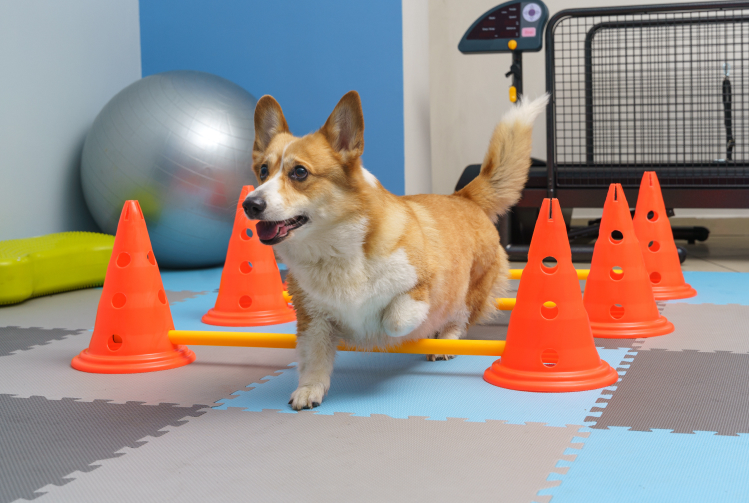A luxating patella, commonly referred to as a "trick knee," is a prevalent orthopaedic condition in dogs where the kneecap (patella) dislocates from its normal position within the femoral groove of the knee. This condition is particularly common in small-breed dogs, but it can also affect larger breeds, especially in cases of lateral luxation.
Research suggests that approximately 7% of puppies may develop this condition. Early recognition of symptoms is crucial, as an untreated luxating patella can progress to chronic pain, arthritis and serious mobility problems.
Why It Matters: Risks of Ignoring the Symptoms
Ignoring luxating patella indicators in pets, especially dogs, carries several serious risks:
- Progression of Joint Instability: Without treatment, the kneecap continues to slip out of its normal position, increasing instability in the knee joint. This instability strains surrounding tissues and ligaments, worsening the condition over time.
- Pain and Arthritis Over Time: Repeated luxation causes wearing down of cartilage, leading to inflammation and chronic arthritis. This progressive joint degeneration results in ongoing pain and reduced joint function, significantly impacting the dog's comfort and well-being.
- Impact on Mobility and Quality of Life: As arthritis and joint damage worsen, pets experience greater difficulty walking, running, jumping and rising. This mobility loss often leads to decreased activity, muscle wasting and reduced quality of life.
- Potential for Permanent Lameness or Need for Surgery: An untreated luxating patella can escalate from mild intermittent lameness to permanent disability. Severe cases may require complex surgery, which is more invasive and carries a longer recovery.
By recognising the signs early and seeking guidance from a rehab vet, you can prevent complications, safeguard your dog’s joints, and support long-term mobility.
Key Signs Your Pet Has a Luxating Patella
The symptoms of a luxating patella in dogs vary based on severity, graded from I to IV. In mild cases (Grade I–II), the kneecap slips out occasionally but returns on its own and can often be managed with conservative care. In severe cases (Grade III–IV), the kneecap is frequently or permanently displaced, typically causing significant discomfort and often requiring surgical intervention.
Common signs to look out for include:
1. Intermittent Limping or Skipping
One of the most noticeable signs is when a dog suddenly lifts one hind leg while walking or running, often described as a “skipping” motion. The dog may hold the leg up for a few steps before resuming normal movement as the kneecap pops back into place.
2. "Bunny-Hopping" Gait
In more advanced cases (Grade II or higher), dogs may move both hind legs together in a hopping motion, resembling a rabbit. This is often seen when the kneecap is frequently out of place, affecting the dog’s ability to extend the knee properly.
3. Sudden Yelping or Pain on Movement
Dogs may vocalise in pain when the kneecap dislocates, particularly during activities like jumping, running or climbing stairs. They may also resist these activities due to discomfort.
4. Kneecap Popping or Clicking
Swelling around the knee or an audible/palpable “pop” or “click” may occur when the kneecap moves out of or back into its groove. This can be detected during physical activity or a veterinary exam.
5. Lameness After Exercise or Play
Stiffness or limping may appear after physical activity, often improving with rest. This intermittent nature can make early detection challenging, as symptoms may not be consistently present.
6. Licking or Chewing the Knee Area
Excessive licking or chewing around the knee can indicate discomfort or inflammation. This behaviour is sometimes mistaken for a skin issue, but it may signal an underlying joint problem.
What Should I Do If My Dog Is Showing Symptoms?
If you observe any of the symptoms mentioned above, take the following steps:
- Monitor Symptoms: Keep track of when signs appear and what activities (running, jumping, climbing) seem to trigger them.
- Restrict Strain: Limit strenuous activities such as rough play, jumping or frequent stair use to avoid worsening the condition.
- Schedule a Veterinary Exam: A veterinarian can confirm the diagnosis through a physical exam and may recommend X-rays or advanced imaging (CT, MRI) to assess severity and rule out related issues like hip dysplasia.
- Discuss Treatment Options: The right treatment for a luxating patella
depends on the severity of the condition and your dog’s overall health. Your
veterinarian will recommend the most suitable approach to relieve pain, restore
mobility, and prevent long-term complications.
- Conservative Management (Grade I–II): This may include anti-inflammatory medications, joint supplements, weight control and physiotherapy to strengthen supporting muscles.
- Surgical Intervention (Grade III–IV): Surgery is often needed to realign the patella and stabilise the joint, using techniques such as deepening the femoral groove or adjusting the patellar ligament.
- Consider Rehabilitation: Whether managed conservatively or post-surgery, rehabilitation therapies, such as physiotherapy and hydrotherapy, can greatly improve muscle strength, joint stability and overall mobility.
Is your dog showing signs of a luxating patella? Call our rehab clinic at 8891 3207 to book a consultation. Our team will carefully assess your dog’s condition and create a tailored rehabilitation programme to reduce pain, restore mobility and help your furry companion enjoy an active, happy life again.




